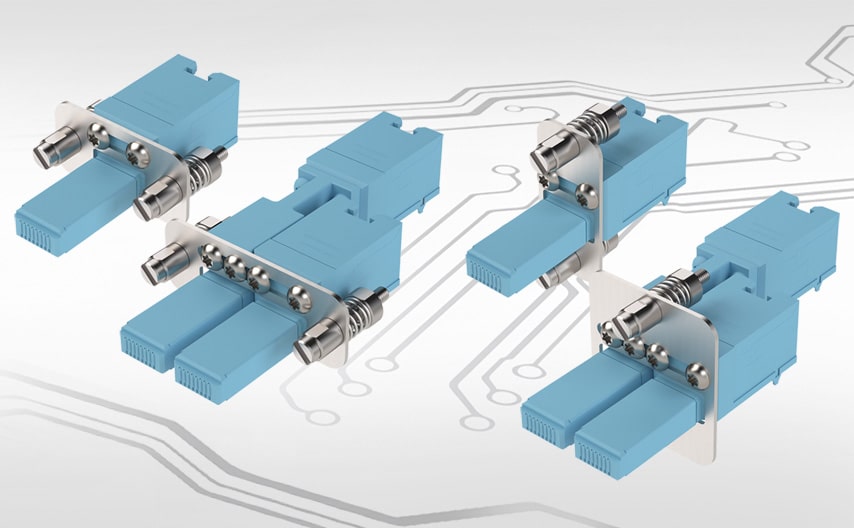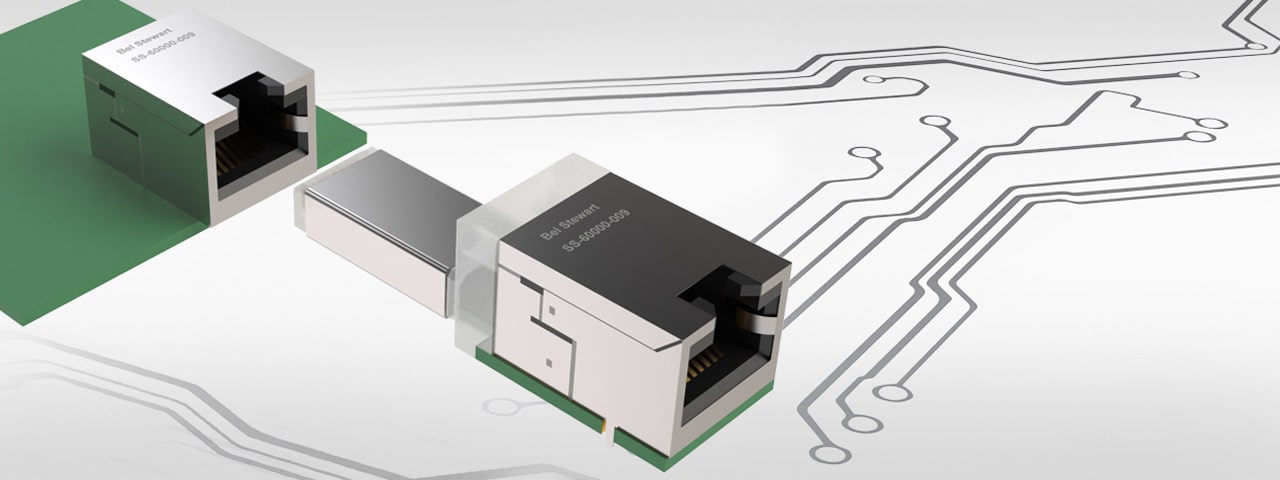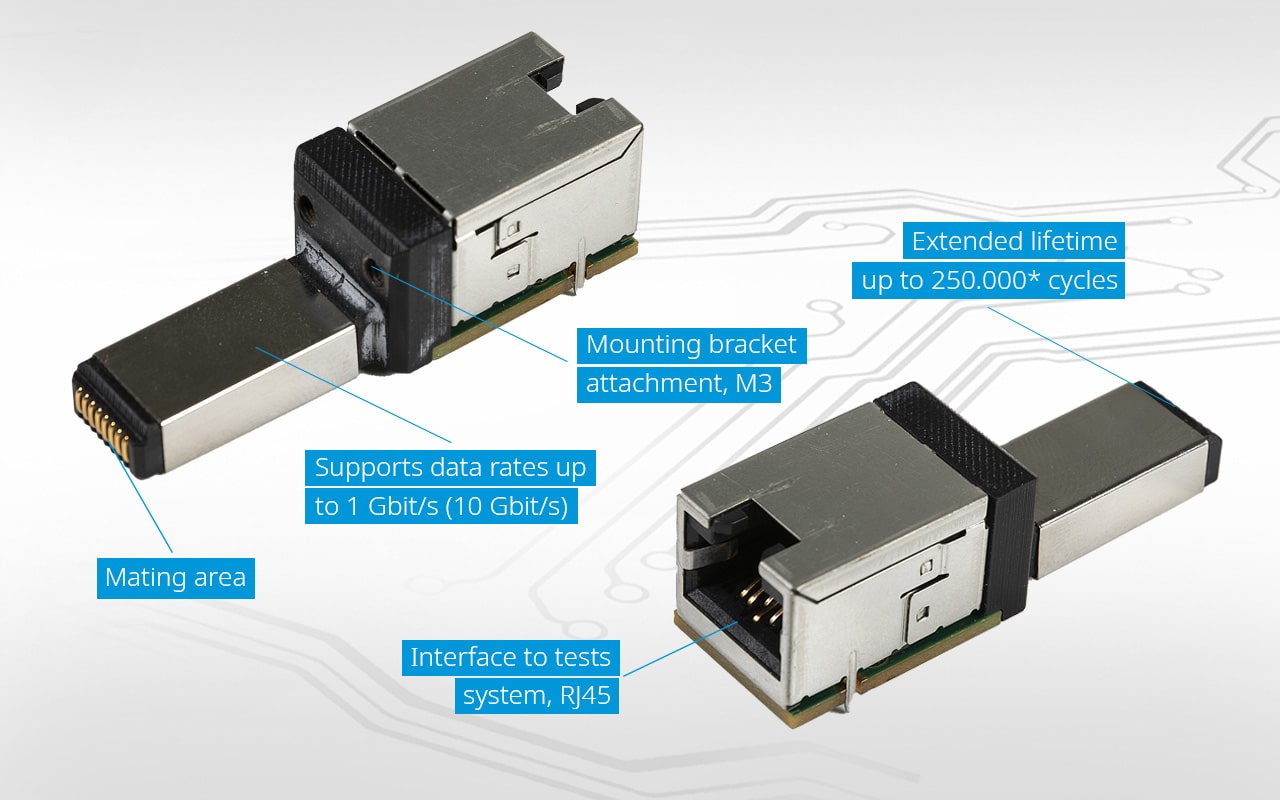Connector contacting
RJ45 connectors have become an integral part of modern network technology. Since their introduction in the 1970s, they have established themselves as the standard for data transmission in telecommunications, IT infrastructures, and industrial networks thanks to their modularity.
Advances in materials and design have continuously improved their performance, enabling higher data transmission rates and more reliable connections.
Evolution and fields of application
Originally developed for telecommunications, the RJ45 connector became the preferred interface for Ethernet networks in the 1980s and remained popular as it supported the rise of local area networks (LANs). Today, it is used in data centres, industrial automation systems and home networks. Especially in industrial environments, its durability supports reliable connections for control systems and automation processes.
In data centres and telecommunications, it ensures efficient data transmission, while in home networks it guarantees stable (network) communication between countless devices. Its versatility and performance make the RJ45 connector an essential component in modern networking.

Features in focus
Modern RJ45 connectors are optimised for high data rates. They have eight electrical contacts and are available both with and without shielding. Versions based on the Cat8 standard support transmission rates of up to 40 Gbit/s over distances of up to 30 metres. This makes them ideal for demanding applications that require high speed and reliability.
RJ45 connectors are also used in industrial application
Contacting solutions for RJ45 connectors
Specialised test plugs are used to efficiently test RJ45 connectors in series production. These compensate for tolerances of connectors on PCBs while bypassing the mechanical interlock. This ensures reproducible test results. Thanks to their robust design, they achieve very high contact cycles and are therefore also suitable for harsh production environments.
The PS-RJ45-M-008-M3-B from INGUN:
- Long service life - up to 250,000 mating cycles
- Impedance-controlled design for data rates up to 1 Gbit/s
- Comprehensive shielding against electromagnetic interference
- Easy integration thanks to RJ45 socket as interface to the test system
For multi-port RJ45 sockets, INGUN offers the PS-RJ45-M-008-M3-XL, which is an extended version. In combination with the PS-RJ45-M-008-M3-B multiport RJ45 sockets with a pitch of just 14 mm can be contacted simultaneously.
Installation and tolerance compensation

Precise contacting requires flexibility in terms of installation options. The test plugs can be secured using M3 screws. Optional test plug mounts with integrated floating elements are available to compensate for positional misalignments of the RJ45 connectors mounted on PCBs. These enable:
- Horizontal and vertical installation for versatile application possibilities
- Contacting of multiport sockets at a pitch distance of 14 mm
- Longer service life due to reduced mechanical load
Test plug mounts for RJ45 test plugs with integrated floating elements
Contacting within tolerances
Thanks to the floating mount, connector position tolerances can be easily compensated.
Want to find out more about contacting solutions for RJ45 connectors?
Then our free on-demand webinar is just right for you: "Industrial Ethernet - Advanced test components for IIoT applications".
Relevant questions from other webinar participants:
Are the INGUN test plugs suitable for high-speed data transmission?
Yes, the impedance-controlled design enables data rates of up to 1 Gbit/s (10 Gbit/s ready).
Can RJ45 connectors also be tested with spring -loaded test probes (pogo pins)?
Yes, but only at low frequencies or data rates (up to approx. 10 Mbit/s). Specialised test plugs are recommended for higher data rates.
What grid size (pitch) can be achieved using the INGUN RJ45 test plugs?
The minimum grid dimension is 14 mm (centre-to-centre).
How does the alignment of the INGUN test plug work with high packing density?
For maximum flexibility, the test plugs can be integrated in specialised floating mounts. Test plug mounts for two RJ45 test plugs next to each other are available as standard.
Our experts will be happy to answer your questions.
Use the enquiry button below or simply pick up the phone:
+49 7531 8105 888


